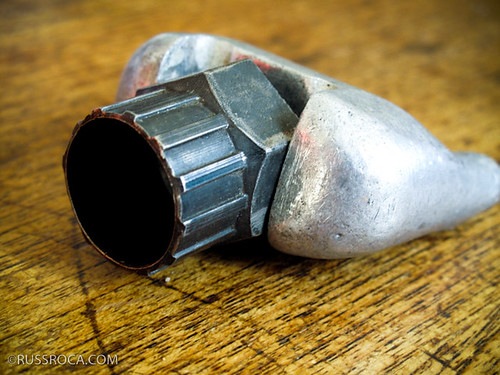
Kudos to Okiecyclist and Doug. The tooth-like implement is indeed a freewheel removal tool, a sort of bench vise on the go. You place the freewheel tool on one end, screw in the skewer (hence the threaded hole) and use the other end to grip a fence, pipe, table or even your handlebars (recommended as last resort). Then you simply turn your wheel to break the freewheel free!

Why would you use this tool in this day and age? Well, many still use freewheels. A Phil Wood rear freewheel hub is about 1/3 the price of the cassette hub equivalent and with that you could build a dishless wheel where you don't have to worry about carrying different length spokes for the rear. In fact, you could build a rear and front wheel that use the same exact length spokes.
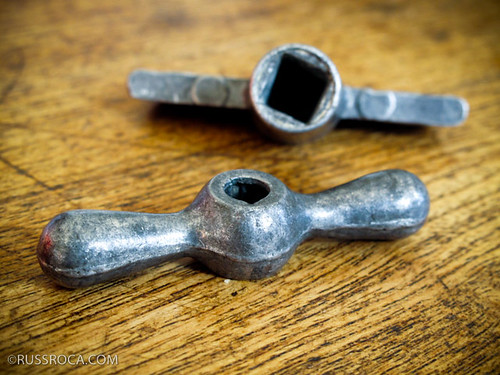
Among the other interesting tools that Chris carries in his Ur-BikeBurrito are faucet keys. You may come upon a spigot that has been disabled. If you were in a pinch for water and you had these faucet keys you could turn on the water with no problem.
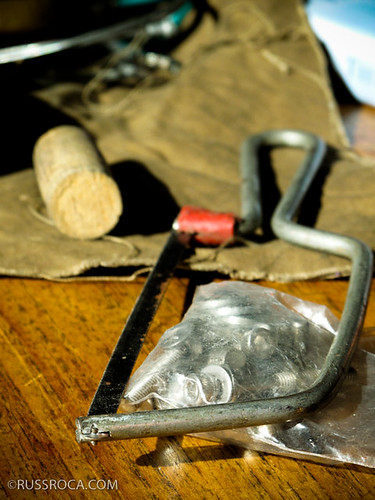
You may also notice a wine bottle cork that can be used as stopper in the bottom of your seatpost where you could carry spokes or emergency cash.
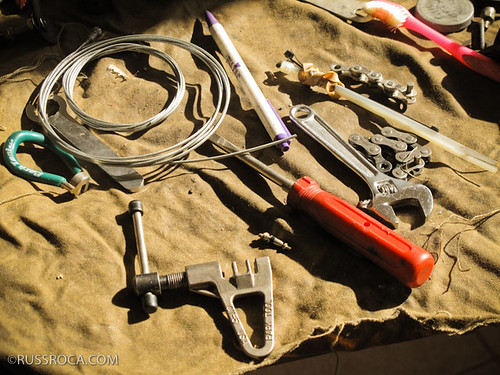
He also carries a small saw and files for on the road machining. Of course, if you're traveling on well trafficked roads with towns every few miles, it might not be necessary to carry all these things. But for adventure touring where you're sure to be puttering along a dirt road, 70 to 100 miles from a small town, these things are good to carry for interesting eventualities.
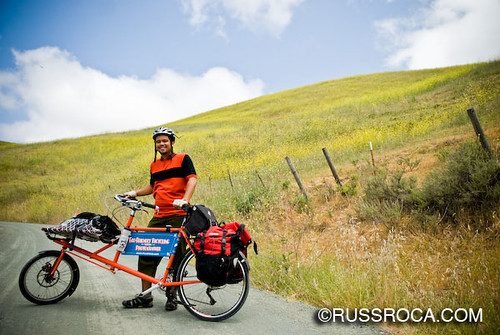
3 comments:
I'm having a hard time imagining how a dishless rear wheel would work?
That freewheel tool could be made quite easily by anyone with a mill. Is it aluminum or steel?
As for the dishless wheel, I imaging that he means you could build a wheel with much less dish since a six speed freewheel is more narrow than a nine or 10 speed cassette.
David, a dishless rear wheel comes from the fact that a 6 or 7 speed freewheel is much narrower than a 9/10 speed freehub. With 135mm spacing, the distances from each hub flange from the center of the hub can be close to equal, making the distance from hub flange to rim equal and the spoke tension difference next to zero.
Post a Comment